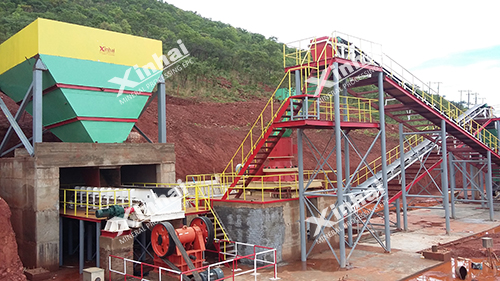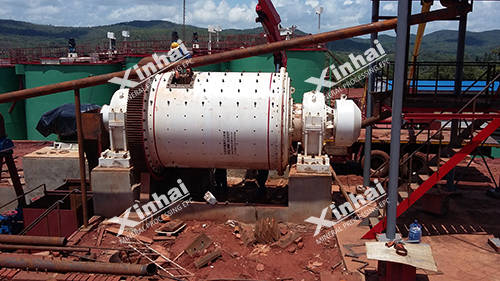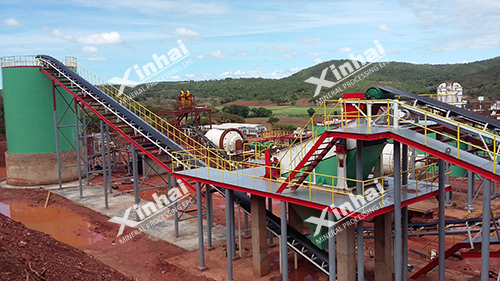
The gold process step by step transforms raw ores into finished gold products. It is a complex journey involving many professional stages.
First, mined raw ores are crushed and screened to reduce their particle size.
Then, grinding and classification refine the ore particles, preparing them for ore dressing.
Next, techniques like gravity separation, flotation, and cyanidation enrich gold elements from gangue minerals.
Finally, smelting and purification remove impurities, producing high-purity gold ingots or other products.
This article elaborates on this precise and systematic gold process step by step.

Gold extraction starts with mining, using two primary methods:
Open-pit mining: Suitable for near-surface deposits. It involves removing soil and rock to access ore.
Underground mining: Used for deeper deposits. It extracts ore through tunnels and shafts, minimizing surface disruption.
The choice of method depends on ore depth, deposit shape, and environmental concerns.
An efficient gold mining plant is crucial for both methods.
Mined ore is moved to the gold processing plant using trucks, conveyors, or railways.
Large operations often use in-pit crushing systems to reduce transportation distances.
At the gold processing plant, ore undergoes preliminary screening.
Overbelt magnets remove tramp metal.
Vibrating screens separate waste rocks.
This step improves efficiency for downstream processes.
Jaw crushers break large ore pieces into smaller chunks.
Cone crushers further reduce the size to gravel (10–20 mm).
Semi-autogenous (SAG) mills grind the ore using its own particles.
Ball mills refine the particles to a sand-like texture (<100 microns).
Proper grinding liberates gold particles from rock, helping recovery during leaching.
Over-grinding wastes energy.
Under-grinding lowers recovery rates.
Particle size control is key in the gold process step by step.

Due to its high density (19.3 g/cm³), gold can be separated by:
Shaking tables: Dense gold settles, while lighter waste flows away.
Centrifugal concentrators: Spin at high speeds to capture gold.
Air bubbles attach to gold minerals treated with collectors (e.g., xanthates).
The gold-bearing bubbles rise to the surface, separating from waste.
Leaching: Gold dissolves in a cyanide solution under alkaline conditions.
CIP (Carbon-in-Pulp): Activated carbon adsorbs dissolved gold after leaching.
CIL (Carbon-in-Leach): Combines leaching and adsorption in one tank, saving time.
CIL is better for clay-rich ores.
CIP works better for cleaner slurries.
Both methods are standard at a modern gold processing plant.

Tailings (waste slurry) are thickened using cyclones or deep-cone thickeners.
Water is recovered for reuse.
Filter presses or vacuum drums further remove moisture.
Tailings are stored in engineered dams lined to prevent leakage.
Advanced techniques like bioleaching allow reprocessing to recover more gold.
This approach enhances sustainability at the gold mining plant.
Byproducts like copper or silver are also extracted, adding revenue.
Loaded carbon undergoes elution.
Hot caustic solution strips gold into a concentrated form.
Gold ions are electroplated onto steel wool cathodes, producing a sludge.
This sludge is washed and dried.
The dried sludge is mixed with fluxes (e.g., borax) and melted at 1,200°C.
This yields doré bars with about 90% purity.
Doré bars are refined using aqua regia or electrolytic methods.
The final product reaches 99.99% purity, meeting London Bullion Market Association standards.
Sampling: Automated samplers collect samples for XRF or fire assay analysis.
Parameter Monitoring: Real-time monitoring of pH, cyanide levels, and temperature optimizes processes.
Compliance: Plants adhere to LBMA and ISO standards for quality and environmental responsibility.
Cyanide Management: Closed-loop systems and detoxification neutralize cyanide before discharge.
Pollution Control: Scrubbers capture mercury vapors; tailings dams prevent acid mine drainage.
Worker Safety: PPE, gas detectors, and emergency protocols protect staff in the gold mining plant.
Gold processing combines geology, chemistry, and engineering.
Every step, from mining to refining, demands precision.
Innovations like thiosulfate leaching and AI optimization are shaping greener futures.
By following the gold process step by step, modern gold processing plants and gold mining plants balance production with sustainability, securing gold’s value for generations.
An overview of mineral processing technology, including its definition, purpose, methods, products, and historical development.
Heap leaching stands out as a versatile and cost-effective method for extracting gold from low-grade ores, but its success hinges on balancing a web of interdependent factors. Here's a breakdown of its core principles, challenges, and innovations—without the jargon-heavy fluff.
